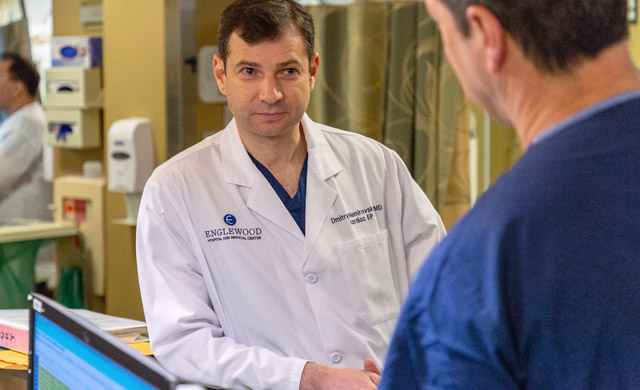
Our goal is to help you understand what you can do to care for your heart rhythm disorder. This starts with carefully testing to make an accurate diagnosis, then working together with you to decide on the care option that’s right for you.
Cardiac Pacemaker
A pacemaker is a device implanted in the chest that stimulates the heart to beat if the heart rate gets too slow. Some types are connected to the heart by wires, or leads. Others, called leadless pacemakers, are implanted directly into one of the heart’s chambers.
Cardiac Resynchronization Therapy (CRT)
We use CRT when the left and right chambers of your heart contract at different times. We implant a pacemaker, about the size of a half-dollar, under your skin just below your collarbone. Then we connect the device to your heart by several wires, which send electrical impulses to help them contract together.
Catheter Ablation
We use this procedure to treat heart rhythm issues without invasive surgery. We insert a very small tube — a catheter — into a blood vessel through your arm, groin, or neck, and extend it to your heart. Then we apply intense heat or cold to destroy only the tissue that is causing the problem.
Cardioversion
Cardioversion is a procedure we use to restore normal heart rhythm in people with certain kinds of heart rhythm abnormalities (arrhythmias). During the procedure, we place electrodes on your chest and send electric shocks to your heart.
Implantable Cardioverter Defibrillator (ICD)
This device delivers an electric shock to restore a normal heartbeat if the heart is beating chaotically or too fast. ICDs are about the size of a pocket watch and are implanted under the skin. We use them to prevent cardiac arrest in patients at high risk.
Left Atrial Appendage (LAA) Closure
The left atrial appendage is a small sac in the top-left chamber of your heart. If you have atrial fibrillation, there’s a chance that blood clots formed in the LAA could cause you to have a stroke. Closing off the LAA lowers this risk.
We perform two procedures to close the LAA. Both lower your risk of stroke and give you a long-term alternative to using anticoagulants (blood thinner medications) such as warfarin.
- Lariat Procedure: During this procedure, we tie off the base of the LAA from outside the heart, blocking blood from flowing in or out. Eventually, the appendage withers away.
- Watchman™ Implant Procedure: The Watchman is an implant we place inside the heart. Made of metal and fabric, it blocks the opening to the LAA to prevent blood flow.